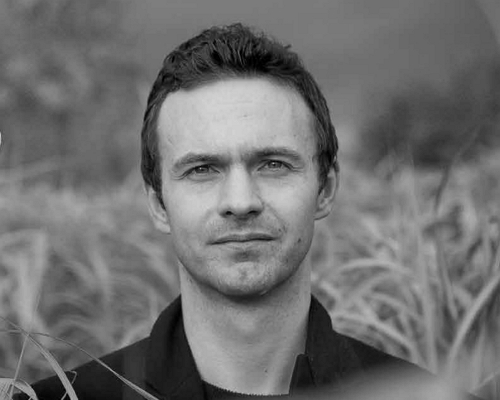Use of Supercritical CO2 for Extraction and Downstream Stages in Bioprocesses
Background
Supercritical CO2 is CO2 (carbon dioxide) maintained at a temperature and pressure above its critical point, resulting in a state of matter that has properties of both a gas and a liquid. Its density is comparable to that of a liquid, while it diffuses into materials like a gas and has a low viscosity. These properties make supercritical CO2 an excellent solvent for many substances, making it a versatile tool in bioprocess development.One of the main applications of supercritical CO2 in bioprocessing is in extraction processes, where it is used to extract compounds from various matrices. Some example applications of the process are listed below:
- Extraction of Essential Oils - Supercritical CO2 extraction is commonly used to separate essential oils from plant materials, where CO2 helps in preserving the aroma and therapeutic properties of these oils without any residual solvent contamination.
- Fractionation of Fatty Acids - In the edible oil industry, supercritical CO2 can fractionate fatty acids directly from oils. For example, it can be used to concentrate omega-3 fatty acids in fish oil, increasing the health benefits of the oil.
- Extraction of Bioactive Compounds - Various bioactive compounds such as flavonoids, carotenoids, and other phytonutrients can be efficiently extracted from plant matrices using supercritical CO2, often resulting in a product with high purity and preserved bioactivity.
- Separation of Bioactive Compounds - Supercritical CO2 can also be used to extract bioactive compounds, such as antioxidants and vitamins, directly from liquid matrices, including various fruit juices and vegetable oils.
- Removal of Alcohol from Beverages - The alcohol in beverages like wine or beer can be removed using supercritical CO2 without significantly affecting the beverage's flavour profile, creating non-alcoholic or low-alcohol alternatives.
- Bio-oil Upgrading - Bio-oil, produced by the pyrolysis of lignocellulosic biomass, can be upgraded using supercritical CO2 to reduce its acidity and improve its stability. This can be important for producing biofuels of sufficient quality for use in engines.
- Biofuel Purification - Biofuels produced from lignocellulosic biomass, such as bioethanol, biobutanol or biodiesel, can be purified using supercritical CO2 to remove impurities or to separate biofuel fractions with different properties.
- Enzyme Recovery - Enzymes can be recovered with supercritical CO2, allowing them to be recycled and reducing the process cost.
- Extraction of Polyphenols - Polyphenols have beneficial health effects but can be difficult to extract without degradation. Supercritical CO2 can extract these compounds efficiently while preserving their properties.
- Separation of Chiral Compounds - Supercritical CO2 has been employed in the separation of enantiomers in chiral compounds, an important process in pharmaceutical manufacturing where different enantiomers can have different therapeutic effects.
Important Aspects in Supercritical CO2
- Solubility of Target Compounds - The foremost consideration is whether the target compounds have sufficient solubility in supercritical CO2. The polarity, size, and structure of the compounds will influence this. Sometimes, non-polar compounds can be more effectively extracted.
- Pressure and Temperature Conditions - The operating pressure and temperature conditions need to be carefully chosen. The temperature and pressure will need to be high enough to bring CO2 into the supercritical state but also optimised for the specific extraction or reaction being conducted.
- Equipment Design and Material - The equipment used must be capable of withstanding high pressure. It should also be resistant to any corrosive properties of the raw material or the extracted substances. Careful thought must be given to design aspects such as mixing, heat transfer, and pressure control.
- Co-Solvent Use - If co-solvents are required to enhance the extraction efficiency or reaction rate, their selection and proportion need careful consideration. The co-solvent should not only enhance the process efficiency but also be easy to separate from the product and CO2.
- Product Recovery - The process for recovering the product after the supercritical extraction or reaction needs to be established. This often involves a depressurization step to convert the supercritical CO2 back to a gas, allowing the product to be separated. The depressurization should be controlled to prevent thermal shocks or loss of product.
- Process Economics - A detailed cost analysis should be performed. This includes not only the costs of equipment, energy, and any co-solvent but also the potential for CO2 recycling, cost savings from reduced purification steps, and potential higher product value due to better quality or purity.
- Safety Considerations - Safe operating procedures need to be established, considering the high-pressure operation and potential hazards from the raw materials or products.
- Environmental Impact - While CO2 is a more environmentally friendly solvent, the overall environmental impact of the process should still be evaluated. This includes the energy consumption, any emissions or waste, and the environmental impact of any co-solvents used.
- Scale-up Potential - Considerations for future scale-up should be kept in mind during the process development. This includes the potential for maintaining uniform conditions in larger equipment, energy efficiency at a larger scale, and maintaining consistent product quality.
Advantages of Supercritical CO2
- Versatility - Supercritical CO2 can act as a solvent for many substances, making it highly versatile in bioprocessing applications.
- Tunable Solvating Power - By manipulating the temperature and pressure, the solvating power of supercritical CO2 can be adjusted, enhancing its selectivity and efficiency in extraction processes.
- Environmentally Friendly - As a solvent, CO2 is non-toxic, non-flammable, and readily available. It leaves no residues, making it a green alternative to traditional organic solvents.
- Excellent Penetration Capability - Supercritical CO2 has the ability to penetrate deep into materials due to its gas-like diffusion properties. This makes it very effective for sterilisation processes and extraction from complex matrices.
- Safe for Heat-Sensitive Materials - Supercritical CO2 can sterilize heat-sensitive materials without causing thermal degradation, an advantage over traditional high-temperature sterilization methods.
- High Purity of Products - Due to its selective nature, the use of supercritical CO2 often results in a high purity product, reducing the need for further downstream purification steps.
Disadvantages of Supercritical CO2
- High Pressure Requirements - Achieving the supercritical state for CO2 requires high pressure, typically above 73.8 bar. This necessitates robust, specialized equipment that can withstand such conditions, increasing the initial investment and operational costs.
- High Energy Consumption - The energy needed to reach and maintain the supercritical conditions, especially the high pressure, can be significant. This could potentially offset some of the environmental benefits of using CO2 as a green solvent.
- Limited Solubility Range - Not all compounds are soluble in supercritical CO2. Its solvating power is generally better for non-polar compounds, while many polar or ionic substances have limited solubility. This can restrict its applicability in certain extraction or reaction processes.
- Need for Co-Solvents - To overcome the limited solubility range, sometimes co-solvents are needed to improve the extraction efficiency. This adds complexity to the process and might introduce issues related to solvent recovery and product purification.
- Expertise Requirements - The operation of supercritical fluid systems requires a certain level of technical expertise and understanding of the thermodynamics of supercritical fluids. There can be safety considerations related to the high pressure, and improper handling can lead to process inefficiencies or safety risks.
- Scale-up Challenges - While the use of supercritical CO2 might be well-established at a lab-scale, scaling up the process to industrial levels can present challenges. These can include maintaining uniform conditions in larger equipment, energy efficiency considerations, and ensuring consistent product quality.
The supercritical CO2 equipment currently in the Celignis Bioprocess facilities are detailed below.
Apeks 5-Litre Supercritical CO2 System
This system has a 5-litre reactor vessel that can hold around 1kg of solid material. The reactor is rated to a pressure of 2000 psi (137 bar) and can reach a maximum temperature of 71 oC. The system includes a separator bank that is rated for pressures up to 600psi and temperatures up to 71 oC.This model has been used extensively in a number of industries, including for the extraction and separation of bioactives (such as CBD) from hemp.

Lalitha Gottumukkala
Founder of Celignis Bioprocess, CIO of Celignis
PhD
Has a deep understanding of all biological and chemical aspects of bioproceses. Has developed Celignis into a renowned provider of bioprocess development services to a global network of clients.

Oscar Bedzo
Bioprocess Project Manager & Technoeconomic Analysis Lead
PhD
A dynamic, purpose-driven chemical engineer with expertise in bioprocess development, process design, simulation and techno-economic analysis over several years in the bioeconomy sector.

Dan Hayes
Celignis CEO And Founder
PhD (Analytical Chemistry)
Dreamer and achiever. Took Celignis from a concept in a research project to being the bioeconomy's premier provider of analytical and bioprocessing expertise.







